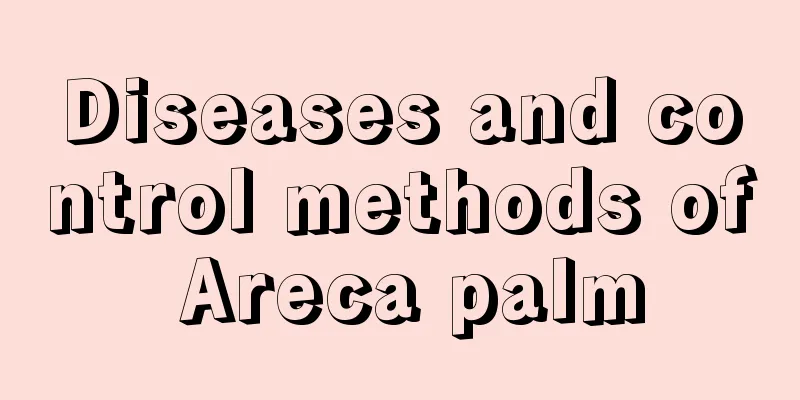Diseases and control methods of Areca palm

Areca palm leaf blightsymptomAreca palm leaf blight is a common disease caused by fungal infection, which has a great impact on the growth of Areca palm. In mild cases, the leaves will dry up, and in severe cases, the entire plant will die. Leaf blight first infects the leaf tips and edges. In the early stage of the disease, the infected areas appear as brown spots or strip-like patches. In the middle stage, the spots or patches gradually expand and connect with each other. In the late stage, the leaves appear gray and dry. WorkaroundStrengthen maintenance, ensure good ventilation and control air humidity. When the disease occurs, you can spray 800 times of 70% thiophanate-methyl solution or 1000 times of 75% thiophanate-methyl solution once every 7 to 10 days, and spray 3 to 4 times in succession to effectively control the disease. Anthracnose of Areca palmsymptomWhen anthracnose occurs in Areca palm, it starts to spread from the leaf edges and tips. Round or oval yellow-brown spots will appear on the leaves, with the diseased areas slightly raised and yellow edges. As the disease worsens, the spots will turn black and become dense black spots. WorkaroundStrengthen water and fertilizer management to enhance the disease resistance of plants. From the early stage of the disease, spray 800 times diluted 50% methyl thiophanate wettable powder plus 800 times diluted 75% thiophanate-methyl wettable powder to kill the disease. Areca palm leaf spotsymptomLeaf spot and leaf blight both affect leaves, but they have different symptoms. When leaf spot disease occurs, small yellow-brown spots appear on the leaves in the early stage of the disease, gradually expanding into streaks and may merge into irregular necrotic blocks. The leaf tips and edges are most susceptible to damage. When the disease is serious, more than half of the leaves will dry up and curl up, as if burned by fire. The center of the lesion is dark or grayish white, surrounded by dark lines on the edge, and in the later stage, small oval black spots are scattered on the diseased part. WorkaroundIn the early stage of the disease, spraying 300-500 times diluted 50% carbendazim wettable powder or 400-650 times diluted 70% mancozeb wettable powder once a week for several consecutive times can effectively prevent and control the disease. |
<<: Common diseases of plum blossom and their prevention and treatment
>>: Disease and Pest Control of Dripping Guanyin
Recommend
Why are cacti not afraid of drought?
1. Huge root system The root system of cactus is ...
Can crape myrtle be planted at the doorstep?
Can crape myrtle be planted at the doorstep? Crap...
How to water Christmas cactus without root rot (correct watering method and precautions)
In fact, there are different methods of watering ...
When is the best time to transplant the red spider lily?
Before transplanting the red spider lily, you sho...
Rose grafting method
The purpose of rose grafting is to use the well-d...
How to cultivate Cymbidium orchid
According to the characteristics of Cymbidium, it...
Does the lotus prefer shade or sun?
Does the lotus prefer shade or sun? Bowl lotus is...
Cucumber planting, cultivation and management techniques
Cucumber is a vegetable with high nutritional val...
What to do if the leaves of Osmanthus fragrans turn yellow
1. Reasons ① Lack of light: It may be placed in a...
She used cans to build a succulent grocery store, and once you walk in, you don’t want to leave!
How good do canned meats look? The succulents gro...
Osmanthus fragrans leaf blight and its control
Leaf blight symptoms Early days Leaf blight initi...
The role of axe-leaf peperomia
The role of axe-leaf peperomia: ornamental Axe-le...
Nandina domestica cultivation methods and precautions
Farming methods soil To grow Nandina domestica, y...
The process of strawberry germination
The process of strawberry germination In order fo...
How to care for and precautions for the rich coconut
Coconut Tree Growth Conditions The Coconut Tree i...









